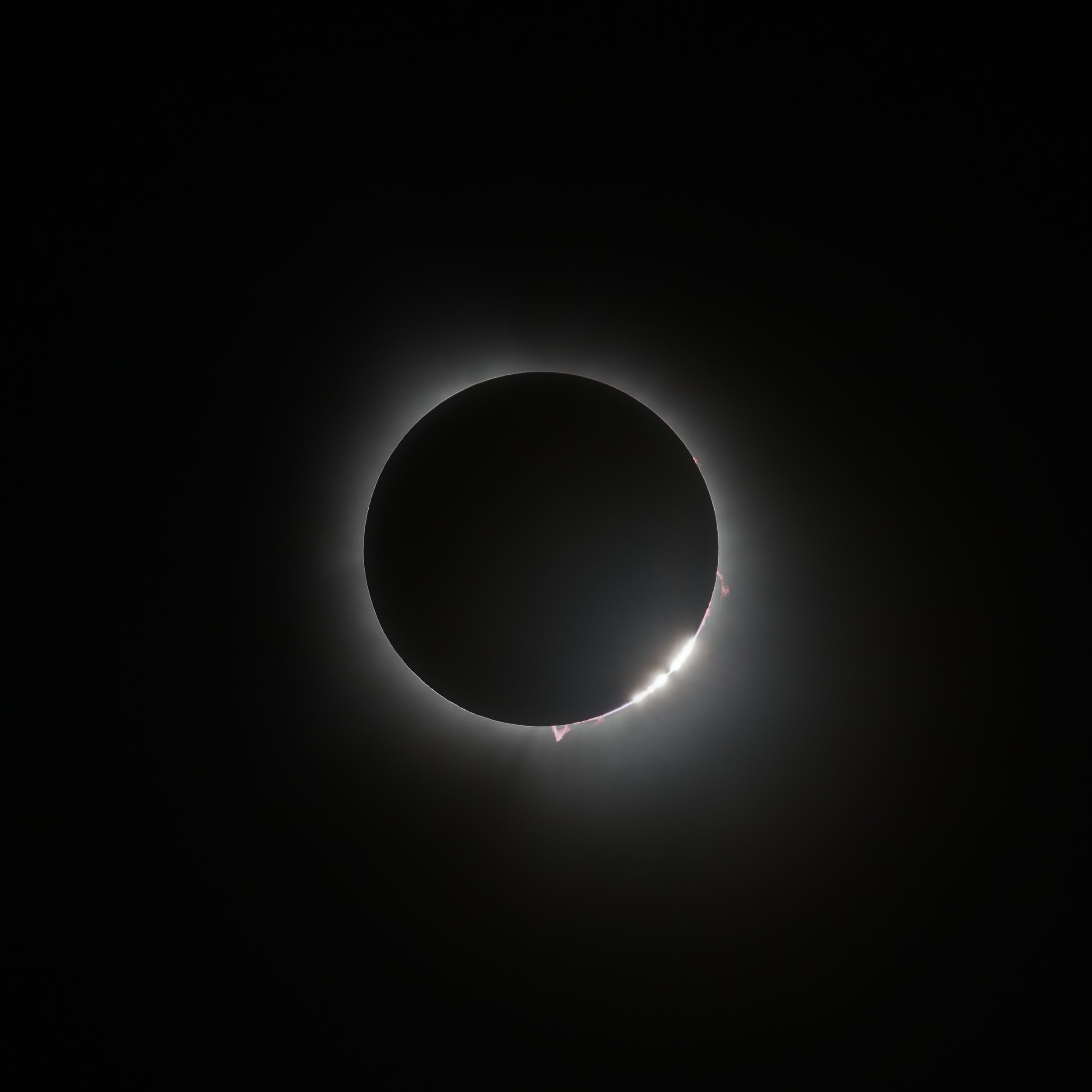By a fluke of weather, Ohio experienced clear (but a bit hazy) skies for the eclipse. This allowed millions of folks to enjoy the extraordinary view on Monday, April 8.
JGAP hired a bus, which took 46 observers to a location selected for its likelihood of clear skies. We ended up in the tiny hamlet of Elsinore, Missouri in a wonderful setting and experienced 4 minutes and 9 seconds of glorious totality!
This was the most beautiful eclipse of the four that I have seen (although that may be recency bias talking.) The rich orange “all around” sunset, the brilliant pinpricks of Jupiter and Venus, and that stunning “messy hair” corona.
One question I’m getting a lot is:
What was that pink spike of light on the bottom of the sun?
That was a solar prominence, commonly called a “solar flare”. It was a giant tongue of mostly hydrogen plasma (atoms stripped of their electrons) being drawn up from the surface of the sun by its intense magnetic fields.
Its Barbie Pink glow is due to the fact that hydrogen gas emits light in three, very specific, frequencies: a deep blue, a kind of aqua-blue, and a deep red. Combine these three colors and you get Barbie Pink, one of the most common colors in the universe!
If you got images, why not share them on our Facebook page or Instagram feed.
https://www.facebook.com/JohnGlennAstronomyPark
#jgastropark
“Bailey’s Beads” are the formed by the first light of the sun peeking through the low points on the moon’s surface. Image by James Luke.



